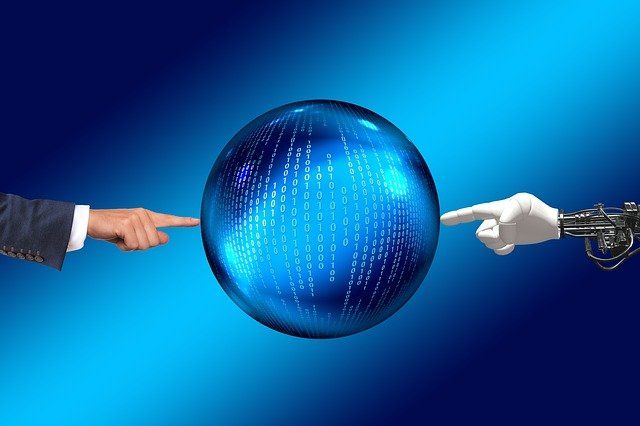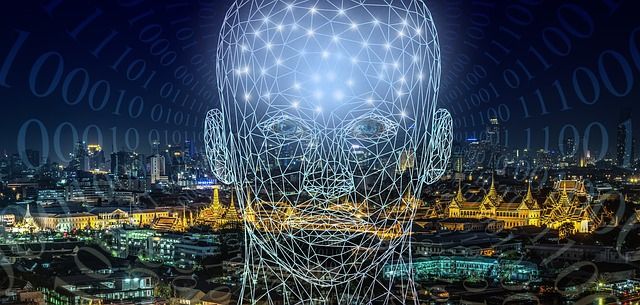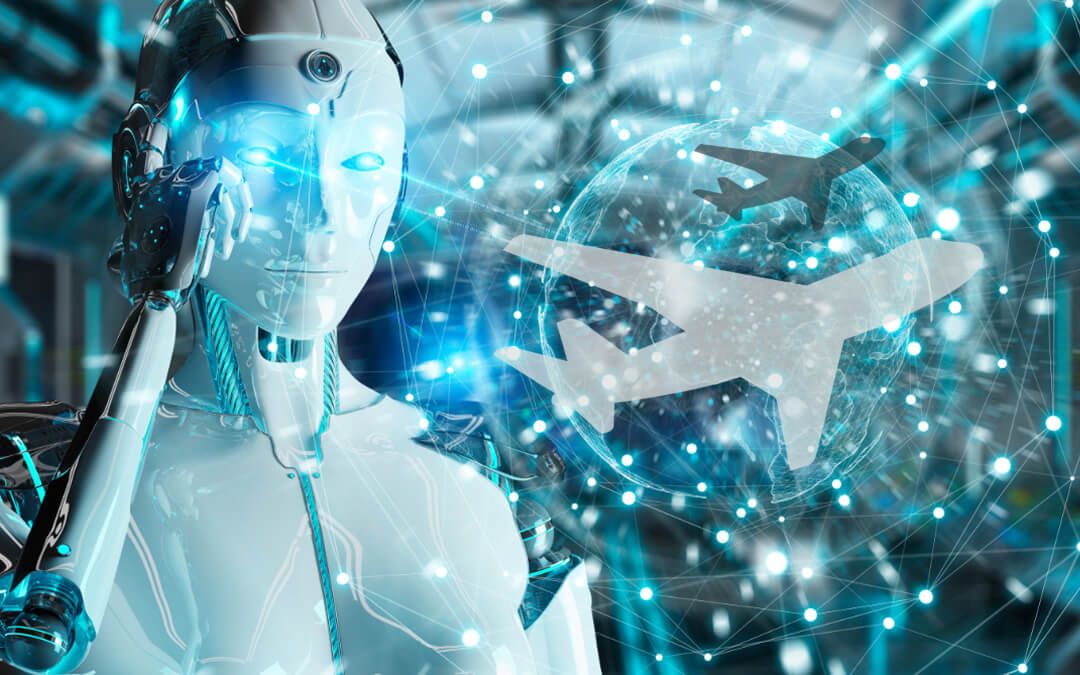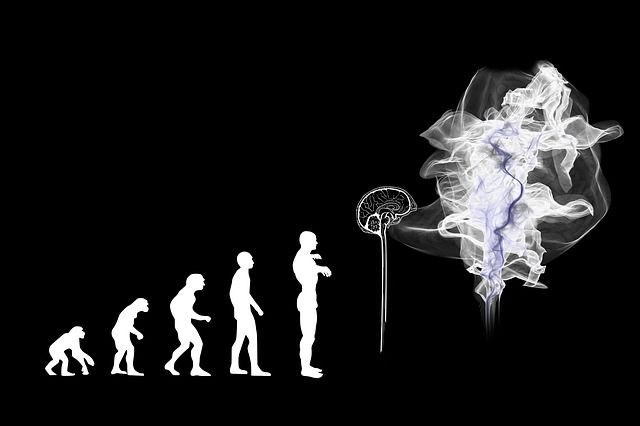Expert Systems in Artificial Intelligence
AI is used in expert systems to help humans or organizations with their judgment and behavioral tasks. Expert systems in artificial intelligence saves information in a knowledge base and use it to solve real-world issues with high competency and intelligence.

What are expert systems? Edward Feigenbaum introduced the concept of expert systems in artificial intelligence at Stanford University during Heuristic Programming Project. He is also famous as the father of AI expert systems. The first expert system developed was SID (Synthesis of Integral Design) in 1982 for a large-scale product. LIPS programming was used to write it.
Expert system, a global artificial intelligence company, announced that it had raised $29.4 million in the latest funding round in 2020. It received $20 million from organizational investors, while $9.4 million were granted from shareholders.
1. INTRODUCTION TO EXPERT SYSTEMS IN ARTIFICIAL INTELLIGENCE
In expert systems, AI is involved in stimulating judgment and behavioral tasks of humans or organizations having expert Systems. It takes relevant information from its knowledge base component and uses it to solve the user's problem. Domain expert humans add data to their knowledge base, and non-experts use this expert systems software to learn about it. Its applications cover diagnosis, coding, accounting, gaming, and many other sectors.
In simpler words, it is an artificial intelligence software that stores knowledge in its knowledge base and uses it to solve critical real-life problems. So, these are expert systems' software and solve computer-related problems with extraordinary expertise and intelligence.
2. WHY ARE EXPERT SYSTEMS REQUIRED?
Before going deep, first discuss why to prefer expert systems over other technology or field-expert humans? These points will clear the confusion.
2.1. No memory limitation
It can store as much data as possible and memorize it for its application. But for humans, it is not possible to store and remember that much information every time.
2.2. Expertise in domain
All human experts have different knowledge and skills with experience even under domains. So, it is not possible to get all information in one professional but in an expert system. It can provide an extraordinary output based on joining all facts and knowledge stored in it.
2.3. Exceptional Efficiency
It provides efficient output if its knowledge base is updated with the correct information; that's not possible in the case of humans.
2.4. Regular System Updates
Regular updates in the installed information improve the performance and lessen the chances of getting wrong results.
2.5. Emotionless
Expert systems are not affected by human emotions like anger, depression, fatigue, and anxiety. The performance remains unbiased.
2.6. Considers All Facts
It considers all the information and share results accordingly for a query. But a human expert may forget about some facts in dealing with a situation in real-time.

3. COMPONENTS OF EXPERT SYSTEM
An expert system comprises three main parts, including the interface engine (deduces new facts based on fed information), the knowledge base (information stored in facts and rules format), and the user interface (communication mean between the system and the user).
3.1. User Interface
The most critical part of an expert system is known as user interface as it receives the user's question in a comprehensible format and delivers it to the interface engine. It exhibits the output to the user. In simpler sense, it is the communication bridge that joins users and the expert system.
3.2. Inference Engine
Also known as an interface engine, it works as the expert system's brain. It contains terms and rules for solving a specific issue. Its knowledge comes from a knowledge Base for providing reasoning about the information stored. It is a significant part of deciding the conclusion part. Moreover, it uses forward and backward chaining strategies to conclude its answer for a problem.
- Forward Changing: In this strategy, the inference engine considers and sorts of rules and facts before sharing a conclusion. It is a chain of situations and derivations to get the result. This strategy is specifically used to draw results, efforts, or conclusions from an issue.
- Backward Chaining: Here, the inference engine strives to find the possible conditions which may happen in the past to find the final words. It is applicable when reasoning is required for a specific situation.
3.3. Knowledge Base
Knowledge base stores all the information about a problem under consideration. In other words, it is a fact repository that comprises knowledge from different sources. How efficient is an expert system is based on its knowledge base and accuracy of its stored information? Components of the knowledge base are given as:
- Factual Knowledge: This knowledge is accepted by domain experts and based on facts and rules.
- Heuristic Knowledge: This information comes under experience or practice. Further, it’s the ability to suppose, estimate, and practical experience.
Other Key Terms in Expert Systems
3.4. Shell
Shell helps developers get details about the knowledge base, interface engine, and user interface. It is a unique tool based on the information and requirements to solve a particular problem by offering relevant information to the knowledge base. It is a software tool that offers an integrated building block set to create an Expert System.
3.5. Explanation Systems
These systems are involved in offering the related information that assists in clarifying the problem base and its structure with its several use cases.
3.6. Memory Units
These units store basic information as input for training models. The difference comes with the availability of several methods and techniques to save the data for instant access at any time.
3.7. Facts and Rules
Facts are the sort of information stored in the knowledge base, while rules are significant and cannot be changed and apply facts to solve a specific issue.
3.8. Knowledge Acquisition
The term covers all aspects from gaining knowledge from a domain expert and then being installed in the expert system's knowledge base for problem reasoning and extracting conclusion.

4. HOW TO BUILD AN EXPERT SYSTEM IN ARTIFICIAL INTELLIGENCE?
First, find the characteristics of the query. Domain experts and Knowledge engineers work together to understand the problem accurately. Then the knowledge engineer translates the information into computer language. He develops an inference engine that can use knowledge when asked. Also, he knows which information should be of perfect match and introduced in the engine, which will be helpful in interpreting a situation rightly.
5. PARTICIPANT IN EXPERT SYSTEM DEVELOPMENT
|
Participant Name |
Role |
|
Field Professionals |
A group of experts uses their knowledge to develop an expert system using artificial intelligence. |
|
Knowledge Engineer |
They are technical persons aimed to integrate information in computer systems. |
|
End-User |
It presents the group of people who use the expert system to answer their queries. |
6. TRADITIONAL SYSTEMS V/S EXPERT SYSTEMS IN AI
|
Old System |
Advanced Expert System |
|
Information and its processing are joined in one unit. |
Both are treated as separate components. |
|
It does not make a mistake unless the wrong programming is done. |
An expert system may share wrong interpretations based on information fed. |
|
After complete development, the system is functional. |
It can start working with even less information, and knowledge can be added to it regularly. |
|
It demands stage-wise execution based on fixed algorithms. |
Its execution is done in two ways: logically or heuristically |
|
This system needs complete information to work rightly. |
It can start working with the least or sufficient information. |
7. HUMANS V/S EXPERT SYSTEM
|
Human Domain Expert |
Expert System With AI |
|
It can be shaped accordingly |
Persistent |
|
Not easily transferable |
Easy to shift |
|
Expensive |
Cost-effective |
|
Not easily documented |
Easy to write down |
|
Unpredictable and varying |
Consistent |
8. POPULAR EXPERT SYSTEMS EXAMPLES
The well-known example of Expert Systems in artificial intelligence is XCON for eXpert CONfigurer. Several computer components are changing and evolving with time and can be configured differently.
MUDMAN: A drilling company created MUDMAN to analyze muds or drilling fluid used as a lubricant while pumping down the shaft. The experts analyze the readings based on twenty parameters, including specific gravity, viscosity, and silt contact. The system identifies the trends when the engineers add data by combing these results with historical data for that specific well. It then suggests mud adjustments regarding its composition to reduce the chances of potential issues that can happen.
DENDRAL: An artificial intelligence system was created as a CAES (chemical analysis expert system). Organic chemists use it to find unknown organic molecules with their mass spectra and chemistry knowledge base.
ExperTAX: Cooper & Lybrand is one of the companies that use expert systems developed an ES to assist accountants in reviewing their client's tax quires and findings. The system improves tax service as, unlike humans, it cannot forget questions and checks clients' financial statistics to identify if they are eligible to pay tax.
PXDES: This system is one of the examples of expert systems involved in the detection of lung cancer, its type, and stage. It captures a picture of the upper body like a shadow; the shade helps detection of the damage.
CONSULTANT: IBM introduced an expert system to assist field reps with bidding prices. The rep clears the machine kinds and the factor based on location; ultimately, the system shares a bid. This feature eliminated the need for several administrative issues.
MYCIN: This expert system used backward chaining ES to find infectious bacteria, including meningitis and bacteremia. Plus, it shares suggestions for blood-clotting disease identification and related antibodies.
CaDeT: It is an expert system for the diagnosis of cancer at the initial stages.

9. WHAT ARE THE IMPORTANT CHARACTERISTICS OF AN ES IN AI?
Improved Performance: The performance is improved for recognizing and solving complex problems with high accuracy.
Understandability: Its information-sharing way is highly understandable for the user. Plus, it can listen to humans and respond to them in a similar (human) language.
Responsive: The expert systems in artificial intelligence are highly responsive in solving any complex problem and share results in a shorter time.
Trustworthy: These systems are trustworthy in getting accurate output with the correct interpretation.
10. APPLICATION OF EXPERT SYSTEM IN ARTIFICIAL INTELLIGENCE
Expert systems have the potential to revolutionize every field almost; their special applications are:
10.1. Diagnosis and Troubleshooting:
These systems help reduce errors and suggest the right actions for the malfunctioned device. Medical diagnosis is another sector where expert systems come with their extraordinary capabilities. For instance, the Pathfinder expert system finds and diagnoses lymph-node disorders. It deals with over sixty diseases and detects over a hundred symptoms. Its latest version supports leading pathologists because of its outclass performance.
10.2. Planning and Scheduling:
It deals with potentially complex problems to determine a set of roles to resolve the issues, such as personnel, job scheduling, and airline flight schedules.
10.3. Manufactured Object’s Configuration:
The computer companies develop configuration applications to facilitate minicomputer manufacturers—for instance, problems regarding complex engineering construction and manufacturing.
10.4. Financial Decision Making:
expert systems are primarily used to help what kind of decision makers? Expert advisory systems are developed that help bankers determine which businesses or individuals are eligible for loans. Also, insurance companies use ESs to determine insurance prices and risk factor determination. One of the critical real-life expert system examples is foreign trading.
10.5. Examples Expert System in Business:
Expert systems are working worldwide because of their objective reasoning and explaining capabilities. Ross's AI Attorney expert system is developed for data mining and pattern recognition. It is a self-supported learning system that uses deep learning and natural language processing for mimicking the human brain.
10.6. Publishing Knowledge:
These systems share knowledge related to the user’s query. It is the category where two widely accepted expert systems are introduced. The first is a text advisor that corrects grammatical mistakes, while the other is a tax advisor that advises users about tax procedures and policies.
11. WHAT ARE THE USE CASES OF AI EXPERT SYSTEMS?
Expert systems in artificial intelligence significantly influence every sector, including healthcare and businesses departments. These intelligent systems help plan and schedule several tasks: scheduling flights and manufacturing physical products like vehicles and camera lenses.
12. BEST SELLERS IN ARTIFICIAL INTELLIGENCE EXPERT SYSTEMS
12.1 Artificial Intelligence and Expert Systems
Authors Name: I. Gupta and G. Nagpal
Description: This book deals with multiple branches of AI, including facts, reasoning, expert systems, and neural networks. Plus, it discusses Prolog to teach basic AI programming strategies.
Check Price Here

12.2 Expert Systems: Artificial Intelligence in Business
Authors Name: Paul Harmon and David King
Description: It shares basic knowledge of advanced computer programs, namely expert systems and techniques. It is a complete guide on ESs as what they are? How do they work? And how they are applicable in real-life applications. The book further shares expert system examples in business.
Check Price Here

12.3 The Design of Expert Systems in Artificial Intelligence Using Prolog
Author Name: Mia Gilbert
Description: This book helps develop an expert system using Prolog. It shares detailed information on the components of expert systems and how Prolog is used as its programming language.
Check Price Here

Further, here is the list of expert systems on Amazon (Best Sellers) selling top content regarding Expert Systems using artificial intelligence.
13. PROS OF EXPERT SYSTEMS
The purpose of an expert system is to help various competitive strategies by lowering costs or sharing a more straightforward solution. One of the extraordinary benefits of expert systems is their commitment to helping people understand problems efficiently. Once the information (knowledge) is stored in the code, it can be reproduced with updates, stored, and shared. It can also help as a training tool to teach new engineers who mostly hesitate to ask from experts. Building an expert system opens the door to AI applications in businesses.
- Availability: Easily available due to high software production.
- Cost-effective: Their manufacturing is exceptionally affordable and reasonable.
- Low Error Chances: The error chances of expert system AI are much lesser than human domain experts.
- High Speed: They work efficiently with high speed and reduce the work pressure.
- Low-Risk Chance: They can go to dangerous locations for humans to explore.
14. WHAT ARE THE LIMITATIONS OF EXPERT SYSTEMS IN ARTIFICIAL INTELLIGENCE?
They cannot make the right decisions if not given the proper knowledge. It works like a situation known as garbage-in, garbage-out (GIGO); if there is an error in the fed knowledge, there must be an error in decision making. As each problem is unique, it is difficult to handle it with high accuracy in expert systems. Human domain experts are professional under these circumstances.
Scale is an issue that engineers face during the development of an ES; confusion in deciding its scale (small, large, or a combination of both). Further, the cons of expert systems are given as:
- High maintenance costs
- Development charges
- Complex knowledge acquisition
- Not compatible with all domains
- It cannot prove the logic behind its decision-making.
- Demands constant knowledge updates for updated working
15. CONCLUSION: EXPERT SYSTEM AND ARTIFICIAL INTELLIGENCE
The development of reliable and efficient expert systems for providing the right decision on heuristics or factual basis has been rising. Expert systems are a component of artificial intelligence. However, creating and maintaining them is expensive, but no one can deny their benefits in the right environment. What is an expert system in artificial intelligence, according to you? And what should be their potential benefits in your view? Plus, what do you expect about their futuristic power? Let us know in the comment section below.



